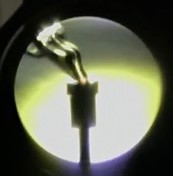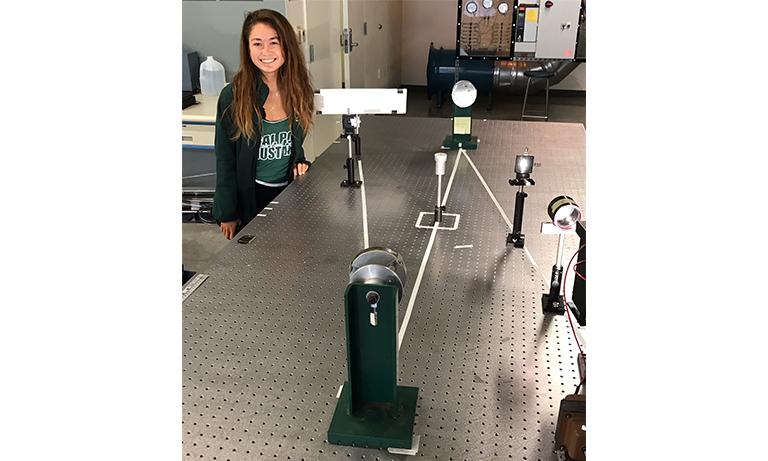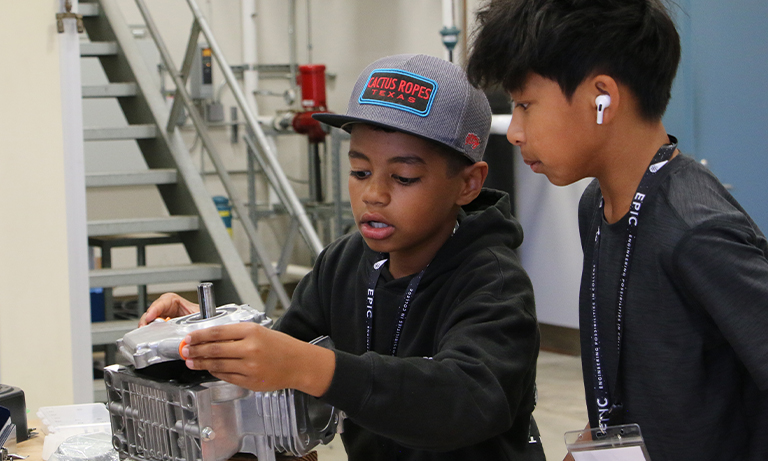By Russ Westphal
Mechanical Engineering senior Makenzie Kamei has assembled two different configurations of Schlieren imaging systems in the Department’s Fluids Lab and used them to create some rather striking images. The Schlieren method allows for the visualization of flow phenomena that involve varying density of the fluid. For gas flows, density variations can occur when there is heating or cooling, pressure variation, or different gases mix. Makenzie’s primary project goal was to set up a Schlieren system to visualize two different variable-density gas flows. A secondary goal was—to the maximum extent possible–employ available parts that were donated to the Fluids Lab inventory by the late longtime Cal Poly Mechanical Engineering Professor Hal Gascoigne. Prof. Gascoigne’s research involved a number of investigations using optical methods for visualization of a variety of phenomena, including stress distributions. His work funded the acquisition of an extensive stock of expensive, specialized optical components… this legacy has found a new purpose in the present project.
Makenzie took on the independent study project under Prof. Russ Westphal to supplement her summer studies, which included taking courses at Munich University. After researching the Schlieren technique, she selected two configurations to assemble: the classic “Z” (2-mirror) configuration, and the less-well-known “V” (single mirror) configuration. The key components for both systems—large-aperature first-surface spherical mirrors—were available from Prof. Gascoigne’s legacy stock of components. Many other components from Prof. Gascoigne’s stock, including a 4×10 ft optical table, Xenon arc lamp, pinholes, and a number of different types of optical component mounts, were also employed. Only a few additional items needed to be procured or fabricated, so that the resulting Schlieren setups were almost entirely composed of Prof. Gascoigne’s stock.
For the flows to visualize, Makenzie selected the plume of a burning candle—a classic Schlieren application—and a high-speed air jet from a nozzle in stagnant surroundings.


“This project has been the embodiment of Cal Poly’s “Learn by Doing” philosophy,” Makenzie said, adding “It’s been a privilege to make use of the parts available in the lab and I am proud of the images I was able to capture. I think Schlieren could be a valuable addition to the laboratory curriculum; it’s one thing to learn theoretically about how a fluid behaves, but it’s incredible to actually be able to visualize it.”


